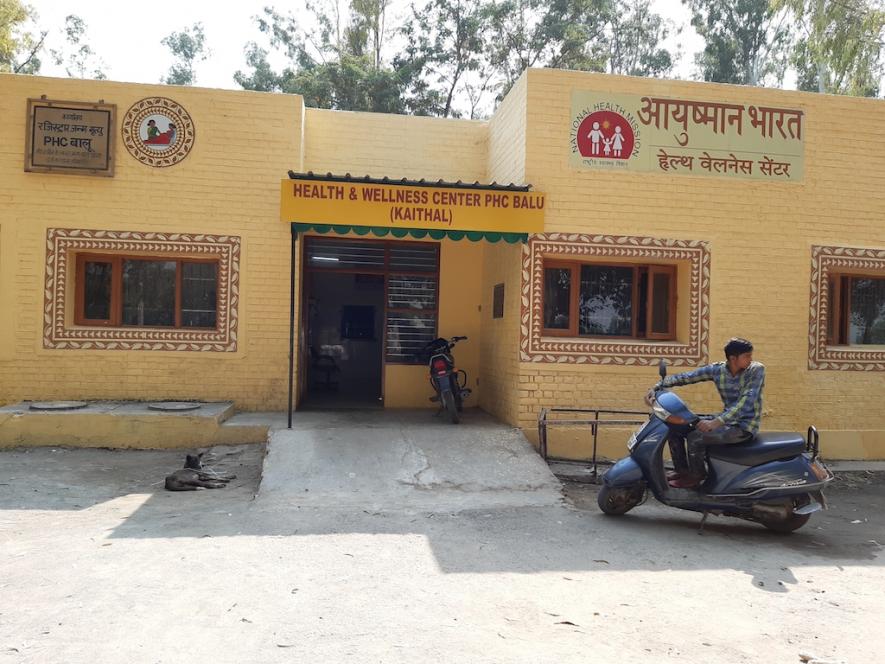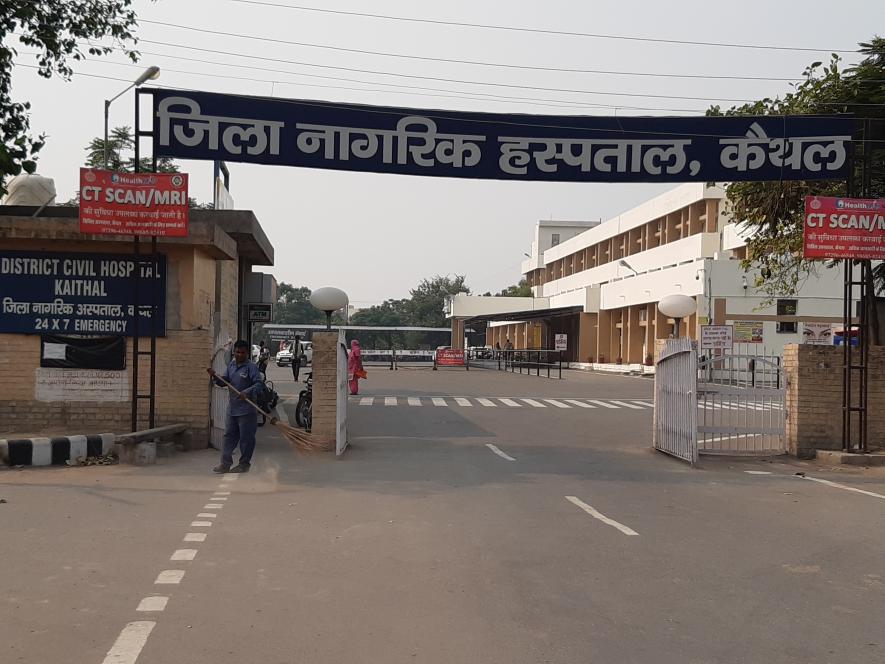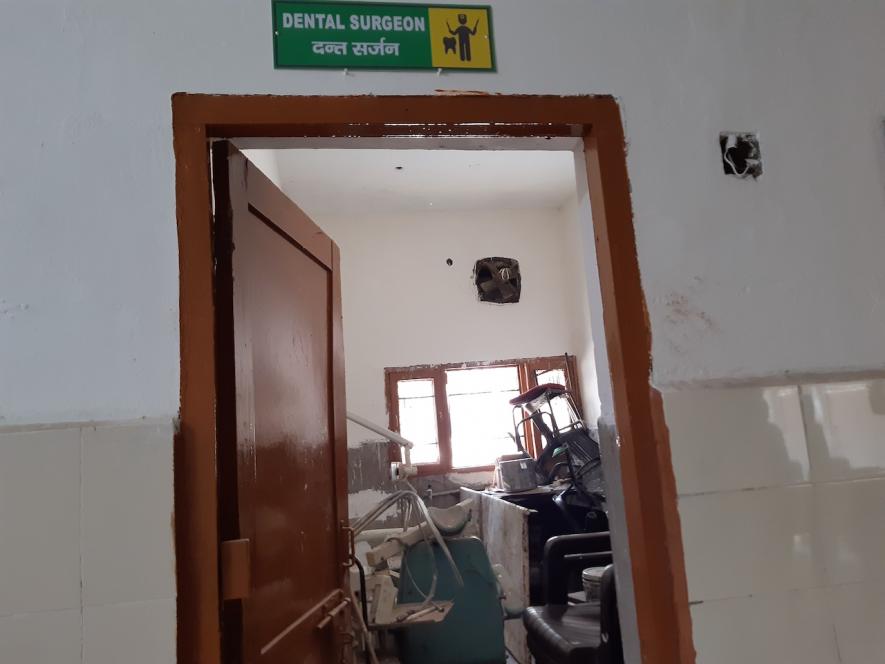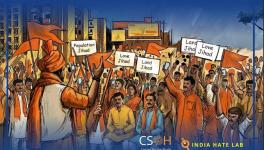Reeling Under Doctor and Staff Crunch, Public Health Still Not a Poll Issue in Haryana

Kaithal (Haryana): Even as Haryana Health Minister Anil Vij, who is contesting the upcoming Assembly election from the Ambala Cantonment seat, has been claiming that the state’s healthcare sector has witnessed a “phenomenal” improvement since the Bharatiya Janata Party (BJP) government came to power in 2014, health infrastructure remains in a dismal condition.
Haryana is witnessing an acute shortage of doctors and there are massive gaps in health infrastructure, contradicting the government’s claims that “health for all” is a priority. While Community Health Centres (CHCs) have inadequate strength of specialists, Primary Health Centres (PHCs) have insufficient number of doctors.

A petition was filed in the Punjab and Haryana High Court by the people of Balu village, a model village in Kaithal district, wherein it had been alleged that the village PHC did not have the sanctioned number of doctors, paramedical staff and even class IV employees. In case of emergency, villagers had no option but go to expensive private hospitals, which many of them could not afford.
The residents of the village told the court through their counsel, Pradeep Rapria, that they had given their land to the government in 2000 for construction of a hospital. A building was constructed in the name of a hospital without any basic facilities.
For example, the PHC in Balu has only three staff against the sanctioned 25 posts of doctors, paramedics and others. Six out of eight posts of doctors are lying vacant at the tehsil level hospital, which has no nursing staff. Similarly, 36 posts of doctors are lying vacant in the multi-speciality hospital at the district level, says the petition.
The petitioner told the court that proving proper healthcare facilities was the responsibility of the state government. In addition to the state health budget, the court was informed that Haryana had got a grant of Rs 1,562 crore from the Central government in the past three years. Yet, state-run hospitals have shortage of doctors.
The residents of Balu had to knock the doors of the court after their written appeal to Chief Minister Manohar Lal Khattar, Vij and Secretary to the Department of Health, but their pleas went unaddressed.
The High Court, said Rapria, ordered the state government to appoint a doctor and five health workers against vacant posts in the PHC in Balu village. Though the court’s order was complied with and the appointments were made, the petition, by RTI activist Gurudev Singh, termed it insufficient to cater to the 18,000-strong population of the village.
“People in the village donated eight bighas of their land for the hospital. The building was constructed, but the hospital had to wait for years for doctors and medicines. Slowly, trees and bushes grew in the hospital premises and snakes used to be spotted every now and then. A dragon was caught from the premise of the PHC and its video is still available on YouTube. After writing to the chief minister, the health minister and the state health secretary time and again, we moved to the High Court. The government swung into action after the court intervened. The campus was cleaned and walls were painted. A doctor was also posted for few days, but much of the work was done on paper,” Singh told Newsclick.
He said currently, there was no permanent doctor in the PHC. An MBBS doctor visits the health centre from nearby Kalayat CHC thrice a week. Pregnant women have to travel miles for delivery because there is no gynaecologist. This is the only hospital for a population of around 25,000-30,000 of the village and its neighbourhood.
The hospitals in the village typically reflect the sorry state of affairs of public health in large parts of the state. A visit to different PHCs, CHCs and district hospitals in the state by this correspondent showed that all these suffer from the same problem. In many PHCs, pharmacists are treating patients and prescribing diagnostics examinations. Several of them are running at the mercy of Auxiliary Nursing Midwife (ANM) and General Nursing and Midwife (GNM) in absence of doctors and nurses. A majority of PHCs and CHCs don’t even have cleaning staff.
As a result, doctors at several CHCs are overburdened because they also have to take care of the PHCs under their jurisdiction.
If Haryana Civil Medical Services claims are something to go by, around 43% doctors in the state’s civil hospitals are not available for patients. Of the sanctioned posts (3,191) of medical officers and civil surgeons, only around 1,700 are actually attending patients. The rest, says the doctors’ body, are either on long leave and deputation or have gone out to pursue PG courses.
“Civil hospitals are facing a severe crunch of specialists, whose number stand at 620 out of 794 posts. Making matters worse, only 552 of these 620 doctors are on active medical duty, while the remaining hold administrative positions in the department,” it said.
The state government has filed an affidavit in the High Court, acknowledging that there is a shortage of 600 doctors in the state. Sadly, no political party is raising this issue as part of their election campaign.
According to the government’s reply to the court, there 3,294 small and big government hospitals in the state. These include 59 district hospitals, 119 CHCs, 486 PHCs and 2,630 sub-centres. All these healthcare facilities have 3,191 doctors against the sanctioned strength of 3,682 doctors.
“Hospitals in Haryana have become a white elephant as a result of inadequate number of doctors and nursing staff. There are good buildings for hospitals but insufficient healthcare facilities. Interestingly, political parties have talked about improving health facilities in the state in their election manifestos, but going by their past records, it does not appear they are interested in fulfilling their promises. Ironically, the voters also ignore these basic issues while exercising their right to franchise,” rights activist Sunil Ravish told Newsclick.
HARYANA’S HEALTH AT A GLANCE
There has been no significant increase in the expenditure on health services by the state government in the past five years. When the BJP government came to power here in 2014, only 4% of the total budget was spent on healthcare services in the state. The spending was further reduced to 3.1% in the 2015-16 budget. Despite the fact that the state needs good investment in the health sector, the government maintained the fund allocation at around 4% till date.
While every government hospital in the state serves more than 1.6 lakh patients, there is only one bed for every 3,481 persons. In addition, every allopathic doctor serves over 10,000 people while a dental surgeon serves more than 47,000 people in the state, stated the National Health Profile released by Union Health Ministry.

Haryana is spending just 0.51% of its Gross State Domestic Product (GDP) on its health sector, while it registered Rs 661 per capita health expenditure, remaining at the bottom in the list of northern states, including Delhi, Himachal Pradesh and Punjab and Jammu and Kashmir.
The monthly per capita household out-of-pocket medical expenditure in rural areas is Rs 113, while it is Rs 149 in urban parts of Haryana, as per the National Health Profile.
According to government think tank, NITI Aayog, Haryana ranks 12th in healthcare services across the country. The state was ranked 13th in 2015-16. This means, the BJP government also failed to improve the healthcare services in the state.
As per the National Family Health Survey (NFHS-4), infant mortality rate in children under five years (U5MR) in the state stood at 33 per 1,000 children in 2015-16. There has been a decline of 21.42% in the infant mortality in the past 10 years. It was 42 per 1,000 in the year 2005-06. But this decline is less than the national average of 28%.
The infant mortality rate in children up to five years came down to 41 per 1,000 in 2015-16, against 52 per 1,000 in 2005-06. But this fall of 21% is far below the national average of 32%.
The survey report also reveals that the prevalence of anaemia across all ages is extremely high in the state. Almost 71.7% of children aged under five, 62.7% of the girls aged between 15-19 years, 62.7% women in the reproductive age group of 15-49 years and 55% of the pregnant women between 15-49 years are anaemic.
According to the National Health Profile 2018, diarrhoea cases have increased in Haryana. In 2016, 2.24 lakh cases were reported and increased to 2.36 lakh in 2017. At least 20 people died of the disease during this period.
PROMISES OF POLITICAL PARTIES
The condition of healthcare services may not be an issue in elections, but political parties have given it a space it in their election manifestos.
Congress has said that it will give a health card to every resident, and the poor will have access to free medical treatment. In addition, every village of the state will have an ambulance. As soon as the party forms the government, it will open rehabilitation centres for drug addicts. Government hospitals will be modernised with latest technologies and facilities.
The ruling BJP has promised that their government will provide free health check-up once in a year to all beneficiaries of the Ayushman Bharat Yojna. The government will build 2,000 wellness centres across the state. The number of Jan Aushadhi Kendras (government centres where generic medicines are sold at cheaper prices) will be increased. The state will eliminate malnutrition from children and women.
Haryana is going to polls on October 21. According to the Election Commission, nearly 1.82 crore voters of the state will decide the fate of 1,169 candidates. Of the total 1,82,82,570 electorates in the state, there are 97.7 lakh male and 85 lakh female voters. In addition, there are 724 non-resident Indians (NRIs) and 1.07 lakh service voters.
A total of 1,169 candidates (1,064 men, 104 women and one trans gender) are in the fray for the 90 Assembly seats in the state. A total of 375 independents are also in the fray.
Hansi constituency has the maximum 25 candidates, while Ambala Cantonment and Shahabad (reserved) seats have the seat six candidates.
The Indian National Lok Dal (INLD), which is contesting on 81 seats, is the only recognised party at the state level. While national parties such as the BJP and the Congress have fielded candidates for all 90 seats, the Bahujan Samaj Party (BSP) is fighting on 87 seats.
Other parties, including the newly formed Jantantrik Janata Party (JJP), have fielded 434 candidates. The election watchdog has claimed that it has completed preparations to conduct fair and peaceful polling with the help of 27,611 Electronic Voting Machines (EVMs) at the total 19,578 polling stations across the state.
(Data support by Peeyush Sharma)
Get the latest reports & analysis with people's perspective on Protests, movements & deep analytical videos, discussions of the current affairs in your Telegram app. Subscribe to NewsClick's Telegram channel & get Real-Time updates on stories, as they get published on our website.























